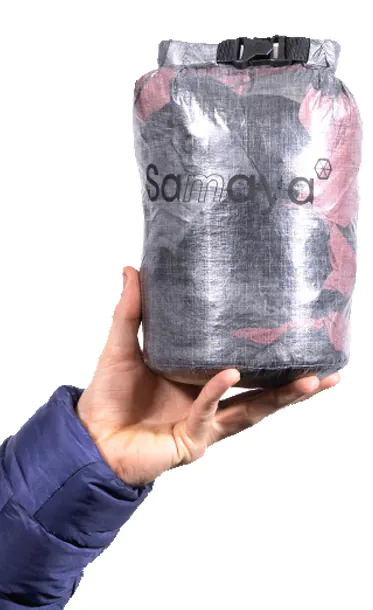Backpacking tents
How to Choose a Backpacking Tent?
Choosing a backpacking tent is about balancing weight, comfort, protection, and price. Here’s a breakdown of the most important factors, with tips to help you make the best decision for your adventures.
Other types of tents (e.g. car camping, multi-room, glamping and other) are not covered here, as their recreational requirements differ significantly from the performance tents you need while on backpacking trips, or in the mountains. Nonetheless, many of the factors overviewed below are universally applicable.

Matching the Tent to the Conditions
3-Season tents are the most popular type, suitable for spring, summer, and autumn. They’re built to handle rain, wind, and mild cold, with plenty of mesh for ventilation in warm conditions.
4-Season tents are designed for winter, expedition or high-altitude use, these tents can handle snow and strong winds. They’re heavier, less ventilated, and often have fewer mesh panels.
Tip: Only invest in a 4-season tent if you’re mountaineering or winter camping regularly, as good ones are really pricey.

Weight: Keep It Light, but Practical
Tent weight matters, especially for long treks. Tents are usually classified by:
- Packed Weight: What it weighs in your bag (includes poles, stakes, stuff sack).
- Trail Weight: Just the tent, fly, and poles.
- Minimum Weight: The bare minimum you can carry.
General weight range (for a 2-person tent):
- Budget tent: ~2.5–3 kg
- Lightweight: ~1.5–2.2 kg
- Ultralight: ~900 g to 1.4 kg
Tip: Don’t sacrifice too much durability or space for weight savings. The sweet spot is usually around 1.8 kg for 2 people.
Packed Size: consider your backpack volume. Ultralight tents pack down to the size of a water bottle, while bulkier models can take up a third of your bag, or more.
Tip: Use compression sacks and separate poles from the body to distribute weight and save space.
Capacity and Interior Space
Tents are labeled by person capacity (1P, 2P, 3P, etc.), but this often assumes tight sleeping quarters.
- Size up if you want extra space for gear or comfort. A 3-person tent is cozy for three but comfortably roomy for two.
- Check interior dimensions—some 2P tents are only 120 cm wide, while others offer 135+ cm.
Also consider:
- Peak height: Can you sit up inside?
- Wall shape: Steeper walls = more usable space
Doors: One or. Two?
Single door
Lighter and simpler, ideal for solo use.
Two doors
More convenient for multiple people. No crawling over other people at night, and more storage space in two vestibules.
Tip: Two doors are usually worth the slight weight increase for multi person tents.
Weather Protection and Ventilation
Rainfly
Ensure it covers the entire tent, not just the top. Partial rainflies offer less protection. Also choose seam-sealed floor to stay dry from below in heavy rain.
Waterproof rating for technical fabrics is called Hydrostatic Head and measured in mm. The higher the rating - the more waterproof the fabric is, and a minimum for a tent should be 3000mm.
Ventilation
Look for mesh panels and vents in the fly to minimize condensation buildup, especially in humid conditions.
Tip: On warm nights, pitch the rainfly halfway open or use a tent with roll-back fly options for better airflow.
Durability: Fabric Specs
Tent material strength is measured in Denier (D) - higher number means thicker, more abrasion-resistant fabric.
- Lightweight tents: 15-30D
- Standard tents: 40-70D
Ultralight tents are delicate - treat them carefully, especially on rocky or rough terrain. Use a footprint (groundsheet) to protect the floor from moisture and abrasions. Some manufacturers include them, others sell them separately.
Tip: You can DIY a footprint from lightweight sheeting (i.e. Tyvek) to save money. Make it slightly smaller than the tent floor to avoid collecting water.
Freestanding OR Non-Freestanding
Freestanding tents
Hold the shape on their own and are easy to pitch virtually anywhere (especially on rock or hard ground).
Non-Freestanding and Trekking Pole tents
Lighter and more compact, but require more time and proper ground for staking and tensioning. Non-Freestanding tents, which are not lighter than a Freestanding ones, should be obsolete.
Tip: If you camp on varied terrain, go with freestanding. If weight is critical and you're used to pitching a tent with trekking poles, non-freestanding is a solid lighter option.
Storage and Organisation
Vestibules
These sheltered spaces outside the door store your backpack and boots, keeping the interior clean.
Interior pockets, gear lofts, and loops
Handy for stashing and hanging headlamps, phones, and other small items.
Tip: Consider a tent with more interior storage options for better organisation on longer trips.
Price: Balance Budget and Features
Tent pricing depends on weight, materials, and brand. Here’s a rough guide:
- Budget tents: up to €200
- Mid-range: €200 - €500
- Premium / Ultralight / Expedition: €500 - sky's the limit...
Tip: Spend more if you plan to use the tent often or in rough conditions. A high-quality tent can last 10+ years with care.
Casual vs. Committed user
Know your needs before buying - there’s no need to over-invest if you only camp occasionally.
Casual backpackers
If you’re hitting the trail a few times a year, comfort and cost may be your top priorities. A slightly heavier, more affordable tent will be just fine.
Frequent / Ultralight backpackers
If you log serious trail time, consider investing into a lighter, more compact tent with premium materials.